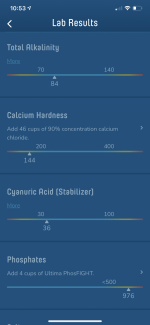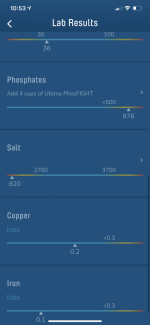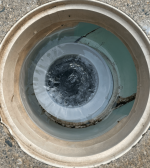Let me try to shed some light on why Recommended levels are different.
I'm not trying to put any words in
@chem geek 's mouth and he can certainly respond to any of this (you can also catch him on e-mail if you like) but in a business like pool equipment company, WaterGuru must present recommendations that are within the regulatory guidelines established for recreational water bodies. In other words, if the EPA & CDC (and any State level governing body) sets recommended levels, then the manufacturer must comply with those. Doing otherwise would open you up to serious liability issues. However, having had many conversations with Richard, I do believe that he feels the recommended levels of 2-5ppm FC are all one needs because his thinking on water chemistry has changed somewhat over the years. To speak for him, I would say that he believes the standard TFP levels of FC being 7.5% of CYA is too high a ratio and he would like to see that number lowered. But his reasoning is predicated on his research that pool owners ought to be measuring and controlling phosphate levels as phosphates can drive algae growth. So his position, if I have accurately gauged all of our conversations over the years, is that if you control for phosphates (meaning keeping them at zero as best as possible but, at the very least, below 1000ppb), then your FC/CYA ratio can be much lower than what is recommended by TFP.
This position is obviously divergent somewhat from what TFP teaches. TFP takes the position the it is more important for the pool owner to practice a simple method of pool care that doesn't involve a lot of unnecessary testing and water conditioning. Treating and controlling phosphates is seen as adding more of burden onto pool owners and, because the industry isn't very honest or reliable with their recommendations for phosphate control or the chemicals they sell to do it, your asking the pool owner to expose themselves to more work and dishonesty than they should. So TFP takes the position that it's ok to run a pool with a higher FC/CYA ratio because, even if it costs more to do so, it's simpler in the end. TFP also has the luxury of being a non-profit web forum so we are not bound by regulations to follow the guidelines that the CDC and EPA place on the pool industry.
So, in the end, you need to look at guidelines as suggestions and ask yourself if what is being taught seems reasonable and achievable.





